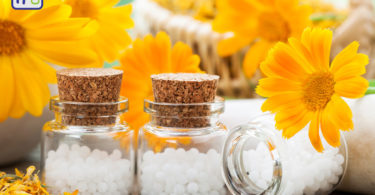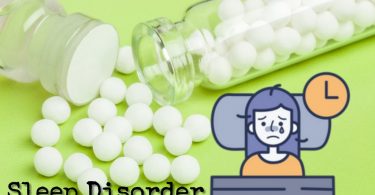Authors: Dr. Sheela Dandge, Dr.Kirtida Desai
Abstract: Post traumatic stress disorder (PTSD) is a mental condition developed after exposure to extreme traumatic events characterised by anxiety and mood disorder leading to difficulty in adjusting and coping with surrounding. Homoeopathy has great potential for treatment of PTSD with improving mental condition and enhances the quality of life. Arsenic album, Aconitum Napellus, Argentum nitricum, Stramonium, Lyssinum suggesting the effectiveness of homoeopathic treatment in cases of PTSD.
Keywords: PTSD, causes, homoeopathic approach
Abbreviations: Post-traumatic stress disorder -PTSD
Introduction
Post-traumatic stress disorder is an intense, prolonged and sometimes delayed reaction to an exceptionally stressful event such as major road accident, rape or other severe trauma. Post-traumatic stress disorder (PTSD) is a mental condition which is triggered by a frightening event – either experiencing it or witnessing it.1Patient may develop nervousness after exposure to extreme traumatic events such as injury or the death of a loved one. The reaction may occur shortly after the trauma known as acute stress disorder or it may be delayed reaction known as PTSD. Patient with stress disorder are at risk for the development of other disorders related to anxiety, mood and substance abuse such as alcohol. Between 5 and 10 % of American population suffering from PTSD, women are more likely to be affected than men.2(i) Most patient go through traumatic events may have temporary difficulty in adjusting and coping, but with time and good self-care, they usually get better. If the symptoms get worse, lasting for months or even years, and interfere with patients day-to-day working, leading to post traumatic stress disorder. PTSD was previously named as soldier’s heart, shell shock, combat neurosis, and operational fatigue.3(i)
Pathophysiology
It is hypothesized that in PTSD there are excessive release of nor epinephrine from the locus coeruleus in response to stress and increased noradrenergic activity at projection sites in the hippocampus and amygdala. These changes theoretically facilitate the encoding of fear-based memories.2(ii)
Symptoms
Post-traumatic stress disorder symptoms may start within one month of a traumatic event, but sometimes symptoms may not appear until years after the event. These symptoms cause significant problems in social or work situations and in relationships. Patient can also interfere with ability to do normal daily tasks. PTSD symptoms are generally affecting intrusive memories, avoidance, negative changes in thinking and mood, and changes in physical and emotional reactions. Symptoms can vary over time or vary from person to person. Symptoms of intrusive memories may include: recurrent, unwanted distressing memories of the traumatic event, reliving the traumatic event as if it were happening again (flashbacks), upsetting dreams or nightmares about the traumatic event, severe emotional distress or physical reactions to something that reminds of the traumatic event. Symptoms of avoidance may include: trying to avoid thinking or talking about the traumatic event, avoiding places, activities or people that remind of the traumatic event. Symptoms of negative changes in thinking and mood may include: negative thoughts, other people or the world, hopelessness about the future, memory problems, including not remembering important aspects of the traumatic event, difficulty maintaining close relationships, feeling detached from family and friends, lack of interest in activities once enjoyed, difficulty experiencing positive emotions, feeling emotionally numb. Symptoms of changes in physical and emotional reactions (also called arousal symptoms) may include: being easily startled or frightened, self-destructive behaviour, such as drinking too much or driving too fast, trouble sleeping, trouble concentrating, irritability, angry outbursts or aggressive behaviour, overwhelming guilt or shame.
Causes
Stressful experiences, including the amount and severity of trauma patient have gone through life, inherited mental health risks, such as a family history of anxiety and depression, Inherited features of personality — often called temperament, the way brain regulates the chemicals and hormones of body in response to stress
Risk factors
People of all ages can have post-traumatic stress disorder. However, some factors may develop PTSD after a traumatic event, such as: Experiencing intense or long-lasting trauma. Having experienced other trauma earlier in life such as childhood abuse, having a job that increases risk of being exposed to traumatic events such as military personnel, having other mental health problems such as anxiety or depression, having problems with substance misuse such as excess drinking or drug use, lacking a good support system of family and friends, having blood relatives with mental health problems. The most common events leading to the development of PTSD include: combat exposure, childhood physical abuse, sexual violence, physical assault, being threatened with a weapon, an accident, many other traumatic events also can lead to PTSD, such as fire, natural disaster, mugging, robbery, plane crash, torture, kidnapping, life-threatening medical diagnosis, terrorist attack, and other extreme or life-threatening events.2(iii)
Complications: Post-traumatic stress disorder can disrupt whole life job, relationships, health and enjoyment of everyday activities. Depression and anxiety, issues with drugs or alcohol use, eating disorders, suicidal thoughts and actions
Prevention and general management: After surviving a traumatic event, many people have PTSD-like symptoms at first, such as being unable to stop thinking about what’s happened. Fear, anxiety, anger, depression, guilt — all are common reactions to trauma. However, the majority of people exposed to trauma do not develop long-term post-traumatic stress disorder. Getting timely help and support may prevent normal stress reactions from getting worse and developing into PTSD. This may mean turning to family and friends who will listen and offer comfort. It may mean seeking out a mental health professional for a brief course of therapy. Some people may also find it helpful to turn to their faith community. Support from others also may help prevent from turning to unhealthy coping methods, such as misuse of alcohol or drugs. Relaxation techniques and cognitive approach to coping with stress are useful. Supportive psychotherapy, counselling, crisis intervention, psychoanalytical therapies are given to patient.3(ii)
Homoeopathic approach
Homoeopathy with its holistic approach proves to be one of the most valuable systems of medicine while dealing with the cases of PTSD. The innermost core of philosophy allows treating the patients on the basis of individualisation. Homoeopathy acts both as a preventive as well as a curative mode of treatment as it is dependent on the totality of presenting symptoms irrespective of the name of disease. The totality includes subjective and objective understanding about the disease state where the underlying cause and the individual’s susceptibility are being addresses.4
Related rubrics
Kent repertory
Delusion-images phantoms, closing the eyes, on, in, bed
Boericke repertory
Mind-emotion effects-anger,bad news,disappointments,vexation
Mind-mental effects- fright fear
Mind-mental effects-grief,sorrows
Mind-mental effects-shame mortification reserved displeaser
Phatak Repertory
sadness-low spirits,mental symptoms everything viewed in bad light
sadness-low spirits,mental symptoms-fear from
sadness-low spirits,mental symptoms-horrid
sadness-low spirits,mental symptoms-grif from
Depression
Dreams accidents
Dreams death of
Dreams horrible
Dreams anxious frightful
Related homoeopathic medicines
1 Arsenicum album:
Mentally the patient is extremely nervous, restless and anxious. Agonising fear of death, death due to starvation or financial loss. Suicidal impulses are coming in mind, patient is very restless, changes place continuously, want to go from one bed to other Fear of being left alone, lest he do himself bodily harm. Fears he murdered somebody. Patient have fixed ideas, hallucinations, imagines house full of thieves, patients want to jumps and hides. Patient has tendency to find fault in everything. Become very violent, self torture, pulls hair, bites nails, tears own body. Does not want to meet friend.5
2. Aconitum napellus:
There is emotional and mental tension, represented in the form of fright or fear and its consequences are anxiety and fear of death. The fear an apprehension of aconite is shown in dread of crossing street. There is intolerance of music. Imagines that some part of body is deformed. A strong disposition to be angry, to be frightened, and to quarrel, humour changeable, at one time sat, depressed, irritable and despairing, at another time gay, excited full of hope, and disposed to seen and dance. Paralysis of mind with incapability of reflexion and a sensation as if all the intellectual performed in the region of stomach. Unsteadiness of ideas. Sleepless in the anxiety and constant tossing about. Anxious dream with much talking and moving while sleeping. Dreams with a sort of clairvoyance6.
3. Argentum nitricum:
Patient is very melancholic, have impulses to jump out of window. Very impulsive, wants to do things in a hurried manner. Fears, anxiety and hidden irrational motives for action. Emotional disturbances cause appearance of hemi cranial attack. Memory very weak, errors in perception, sleepless from fancies before his imagination, horrible dreams of snakes and sexual gratification.7 Patient believes that he is despised by his family, that all his undertakings will fail. Tormented by strange ideas and emotions. Weeps, says he is loosed beyond hope. Irrational, does strange things and comes to strange conclusion, does foolish thing.8
4. Stramonium:
Stramonium is like an earthquake in its violence. Violent speech, tearing clothes, it is usual in mania that has excited for some times, attack of mania coming on paroxysm appearing with more or less suddenness, delirium with bland, murmuring, violent, foolish, loquacious, incoherent, chattering, with open eyes with spasmodic laughter, attempt to stab and bite, with sexual excitement, fear as if a dog were attacking him. Strange ideas about the formation of his body. This is animals, ghost, angels, departed spirits, devils and knows that they are not real but later he is confident of it. He has this hallucination specially in the dark. Screams until he is hoarse or losses his voice. cardiac affections with great constriction of the chest, mental irritability, delusion as to personal identity inability to sleep in dark, great anxiety when on a train going through a tunnel, pulse irregular. Sleep full of dreams and turmoil.9
5. Lyssinum:
Hypersensitive to sound, light, smell, and even others’ emotions. Their emotions are raw, like exposed nerves. They feel they are being tormented or ridiculed, and have a dread that something bad will happen to them. May have many phobias, such as fear of driving, flying, injury, suffocation. May also fear being alone, even though they tend to do better by themselves in a quiet room without much light. They have an irrational fear of water, either seeing it or just thinking of it. They have been bitten by an animal and had fears since then. They may turn violent and abusive.10
Conclusion:
Post-traumatic stress disorder (PTSD) is a mental condition which is triggered by a fear-provoking event – either experiencing it or witnessing it. Homoeopathy with its holistic approach proves to be one of the most valuable systems of medicine while treating the cases of PTSD. Homoeopathy has great potential for treatment of PTSD with improving mental condition and enhances the quality of life.
References:
1.Ledingham J.G.G.,Warrell D.A.Concise Oxford Textbook of medicine, first published 2000,new York, united states by oxford university press,Inc,2000,p.1402
2.Kasper, Braunwald, Harrisons principles of internal medicine, Vol 2, 16 th edition,mc graw Hill medical,2010,(i)p.2551(ii)p.2551.
3.Siddharth shah, API Text book of medicine, 7th edition, Mumbai, Association of physician of India, 2006, (i) p.1382,(ii)p.1382.
4.Hahnemann S, organon of medicine, 5th & 6th edition, New Delhi, B jain Publisher(P)LTD, 2015
5.Pathak S.R. Materia medica of Homoeopathic medicine, 2nd edition, new Delhi,B jain Publisher(P)LTD, 2007.
6.Clarke J.H., Dictionary of practical material medica, Reprint edition, New Delhi, B- jain Publisher(P)LTD,1990.
7.Boericke W, pocket manual of homoeopathic material medica and repertory, reprint edition , New Delhi, B-jain Publisher(P)LTD,1998.
8.Pathak S.R. Materia medica of Homoeopathic medicine, 2nd edition, new Delhi,B jain Publisher(P)LTD, 2007.
9.Kent J.T., Repertory of the homoeopathic material medica, New Delhi, B jain Publisher(P)LTD, 2008.
10.Allen H.C. keynote and characterstic of some of leading remedies of the material medica with bowel nosodes, low price edition, New Delhi, B jain Publisher(P)LTD, 2002, p 472.
About the authors:
Dr.Sheela Dandge, M.D.(Homoeopathy) Practice of Medicine,P.G.Lecturer,JNHMC,Parul University,Vadodara,Gujarat.
Dr.Kirtida Desai, M.D. (Homoeopathy )Materia Medica, P.G.Professor,JNHMC,Parul University,Vadodara,Gujarat.





